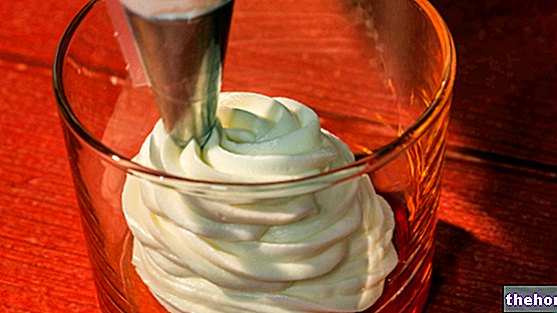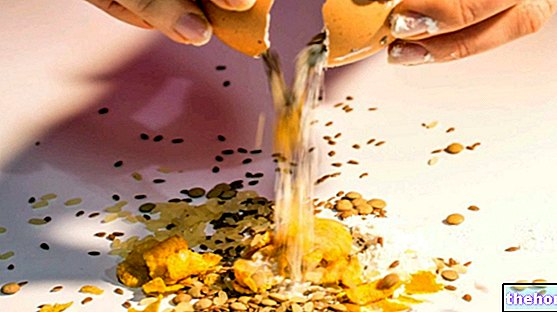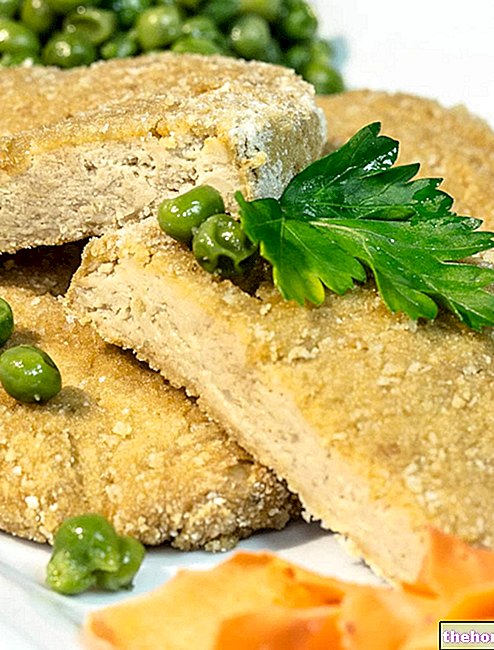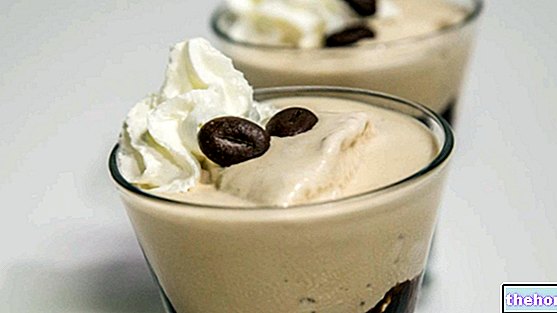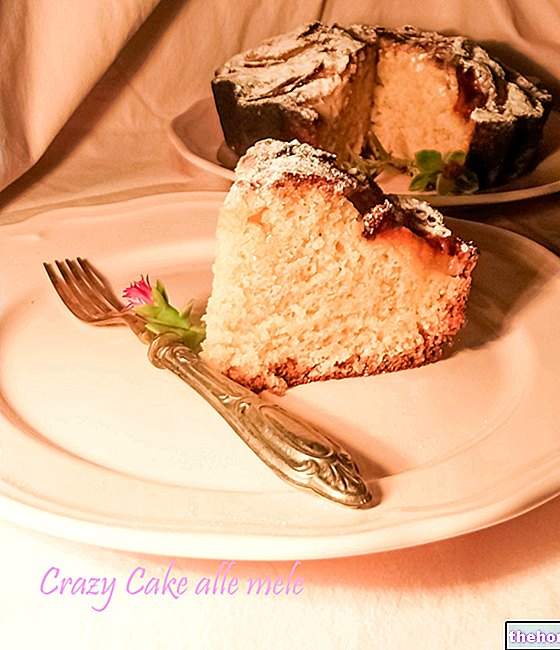INTRODUCTION TO THEORETICAL VIDEO
Today we will focus our attention on foods with very ancient origins and which, fortunately, are making a “very fashionable” return to our tables: sprouts. It is a food that interests and involves above all people who are attentive to their health. In Italy, the sprouts are often considered strange, special and unusual foods, reserved for certain eating habits (eg raw food, veganism) or oriental traditions. I hope to attract your attention, because the information I am about to give you is very interesting: in this first video , totally theoretical, we will understand what sprouts are, how they are produced at home and what are the advantages derived from their consumption.
What are the sprouts?
Sprouts are foods obtained from the sprouted seeds of legumes, cereals, vegetables or oilseeds: these are seeds that are being transformed into a real plant. In other words, the sprouts are nothing but seedlings "at an early age", live foods that can be defined as a precious treasure chest full of vitamins, mineral salts: a real mine of precious vital substances.
What are the nutritional benefits?
Germination involves a series of changes in the nutritional profile of the starting seed. The ingredient that initiates germination is water, capable of activating the process of "revitalization" of the seed. When the seed has reached the perfect balance of water, secondary processes begin, which are essential for the seed to produce spare substances necessary for its transformation into an adult plant.
The changes that the seed undergoes during the germination phase are listed below:
- Starches and hemicellulose are transformed into simpler substances. Carbohydrates (present in the form of starch in seeds) are transformed into simple sugars easily assimilated by the human organism: this explains why the sprouts have a sweet aftertaste.
- Proteins break down into amino acids (which allow for faster digestion and assimilation).
- Lipids break down into their simpler components (glycerol and fatty acids).
- The biological value of proteins undergoes a significant increase.
- The nutritional content of the sprouts appears significantly higher than the starting seed. Just think that in some sprouts, the concentrations of Vit. B1 reach levels of 2000% compared to the starting seed, as well as increase the levels of Vit. B5, B6, folic acid, B2 and B12. The same goes for vitamins A and E. Mineral salts and vitamins also appear to be more easily assimilated because they combine with amino acids.
- Enzymes are activated.
- A part of the anti-nutritional molecules is inactivated: this transformation is due to the action of enzymes. Just think, for example, that during sprouting, phytic acid (anti-nutritional molecule), undergoing the action of enzymes, is unable to exercise the its chelating capacity, consequently the mineral salts are free.
- Sprouts in general are very rich in chlorophyll, a very important pigment that begins to form when the seeds are exposed to the sun. Chlorophyll is important because it stimulates blood circulation, promotes the formation of red blood cells, facilitates the absorption of vitamin A and the digestive functions.
The types of sprouts are as numerous as there are edible botanical species: this is because any plant, before becoming such, passes through the "sprout" phase.
However, not all sprouted seeds are edible because they develop substances that are potentially toxic to health. Among the non-edible sprouted seeds, we remember:
- Potato seeds: contain toxic glycoalkaloids such as solanine
- Eggplant seeds
- Pepper seeds
- Tomato seeds: they contain toxic alkaloids, such as tomatin also called lycopersicin (glycoalkaloid similar to solanine)
- Bean sprouts: have a sweet and tender flavor
- Sprouts of alpha alpha (alfalfa), rich in vitamins C, D, E, K, B vitamins and minerals such as zinc, selenium, magnesium, calcium and phosphorus. They are rich in cumestrol (phytoestrogenic properties) and chlorophyll (antioxidant properties). They have a mild flavor.
- Sunflower sprouts: they have a delicate flavor reminiscent of a mix between walnut and oil. They provide vitamins C and E. Among the mineral salts, there are calcium and phosphorus.
- Lentil sprouts: pleasant on the palate, they are rich in high biological value proteins. Excellent to be eaten raw, sautéed or steamed. They provide significant amounts of iron and B vitamins.
- Pea Sprouts: They are rich in phytoestrogens. They have a taste vaguely reminiscent of asparagus. They are ideal for enriching soups, soups and salads.
- Radish sprouts: source of chlorophyll and antioxidant vitamins (A, C, E). They represent a valid support in strengthening the immune system.
- Mustard Sprouts: They have an acrid and spicy flavor. They are suitable for diabetics because they contribute to the reduction of blood sugar.
- Barley sprouts: they are known for being highly digestible.
- Azuki bean sprouts (red soybeans): the flavor is pleasantly spicy and they are often sautéed before consumption. Very rich in Vit A.
How are sprouts produced at home?
The classic method for obtaining the sprouts at home involves the use of the sprouting device. Those who do not have the sprouting device can still use a home instrumentation. In this case, it is sufficient to have: glass jar, gauze, cord, glass bowls. To obtain a product of the highest quality, it is advisable to buy seeds from organic farming.
We have said that the ingredient that initiates germination is water: for this reason, it is important to let the seeds soak so that the revitalization of the grain takes place. Soaking times vary according to the type of seed (3-12 hours). After the soaking time, it can be seen that the seeds are swollen and the skin that encloses them begins to split: the seeds are ready to germinate. At this point, the seeds must be rinsed from soaking and gathered in a glass jar. Fix a sterile gauze on the lid of the jar, taking care to close the edges with an elastic or with a kitchen cord. Fill the jar again. water, shake it can times, therefore drain. The operation must be repeated once or twice a day, depending on the type of sprout. After 3 days from soaking, it is advisable to expose the jar with the partially sprouted seeds to the sun: the light, in fact, activates the chlorophyll and enriches the young seedlings. After 4-5 days, clear shoots can be seen, ready for consumption. The same operation can be replicated using a colander lined with sterile napkins or gauze, or with a simple colander. At the end of the process, the sprouts can be eaten immediately, preferably raw, or they can be kept in the fridge for 3-7 days. Sprouted soybeans and chickpeas require quick cooking in a pan or steamed before consumption.
INTRODUCTION TO THE VIDEO RECIPE: PREPARATION OF THE SPROUTS OF ALFA ALFA
Today we will nourish ourselves with health by preparing the sprouts at home: we will only need a handful of seeds, water, sun and a little patience! I decided to offer you a classic, the alpha alpha sprouts, but you can follow this procedure using other types of seeds (as long as they are not tomato seeds, potatoes or other plants belonging to the Solanaceae family). Each seed requires a few hours of soaking and a certain number of daily rinsing: after 2-5 days, you will notice the sprouts! let's find out together the correct procedure to germinate the seeds of alpha alpha.
Video of the Recipe
Problems with playing the video? Reload the video from youtube.
Identity Card of the Recipe
- 60 KCal Calories per serving
-
Ingrediants
- 1 tablespoon (about 20 g) of alpha alpha seeds
- Q.b. of water
Materials Needed
- Glass jars
- Colander
- Bowls
- Gauze
- Elastic or cord for food
Preparation
- First, soak the alpha alpha seeds in cold water for 4-6 hours. After the soaking time, it can be seen that the seeds appear swollen and the skin that encloses them (integument) begins to split: the seeds are ready to germinate.
Did you know that
Water represents the ingredient that initiates germination: for this reason, it is important to let the seeds soak so that the revitalization of the seed takes place.- Drain the seeds from soaking and put them in a large glass jar. Rinse a couple of times, eliminating the water.
- Cover the glass jar with gauze, then seal with a rubber band or kitchen cord.
- Place the jar upside down, placing the jar on the cheesecloth side on a colander. Place the colander over a bowl, so that the water droplets collect in the container below.
- Repeat this twice a day.
- After 3 days from soaking, it is advisable to expose the jar with the partially sprouted seeds to the sun: the light, in fact, activates the chlorophyll and enriches the young plants.
- After 4-5 days, clear shoots can be seen, ready for consumption.
The importance of chlorophyll
Sprouts in general are very rich in chlorophyll, a very important pigment that begins to form when the seeds are exposed to the sun. Chlorophyll is important because it stimulates blood circulation, promotes the formation of red blood cells, facilitates the absorption of vitamin A and the digestive functions.- Alpha alpha sprouts can be eaten raw, steamed, or stir-fried. To take full advantage of the properties, however, raw consumption is recommended. Alfalfa sprouts are indeed rich in Vit. C, D, E, K, B vitamins and minerals such as zinc, selenium, magnesium, calcium and phosphorus. They are rich in cumestrol (phytoestrogenic properties) and chlorophyll (antioxidant properties). They have a delicate flavor that goes well with countless foods.
- The sprouts can be kept in the fridge for 5-7 days.
Alice's comment - PersonalCooker
As I have shown you, there is no need to spend astronomical sums for sprouts: not only is home preparation very simple, but it allows us to have fun in the kitchen and to choose the raw material without spending too much money. Sprouts are within everyone's reach and enrich our dishes with vitamins and precious mineral salts.
Feeding on sprouts means feeding on health: try the recipe for Cedar and Sprouts Salad!Nutritional values and Health Comment on the recipe
The alpha-alpha sprouts are a food of vegetable origin that is not too caloric, with an energy prevalence attributable to proteins, followed by carbohydrates and finally by lipids.
The peptides are mainly of medium biological value, the polyunsaturated fatty acids and the semi-complex carbohydrates.
Fiber is very abundant and cholesterol is absent. The alpha-alpha sprouts lend themselves to any diet. The average portion, not including the dressing, is about 100-150g (65-100kcal).

